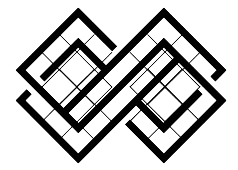In an era where urbanization is reshaping the landscape of our cities, the concept of smart cities is becoming increasingly central to discussions about sustainable development and technological innovation. As populations swell and infrastructure strains under the weight of demand, there is a critical need for solutions that not only enhance urban living but also protect our planet. Enter the powerful fusion of solar energy and the Internet of Things (IoT), two transformative technologies poised to redefine how we understand and interact wiht our urban environments.
In this article, we’ll explore how solar-powered IoT devices are revolutionizing everything from traffic management and public safety to energy consumption and waste management. We’ll delve into accomplished case studies, emerging technologies, and the potential benefits of integrating these systems into our cities. Join us as we uncover how this dynamic duo is paving the way for smarter, greener, and more resilient urban spaces, ensuring a sustainable future for generations to come.
Table of Contents
- Harnessing Solar Energy for Sustainable IoT Solutions in Urban Environments
- Enhancing Infrastructure resilience Through Solar-Powered IoT Technologies
- Empowering Communities: The role of Solar-Powered IoT in Citizen Engagement
- Strategic Recommendations for Implementing Solar-Powered IoT in Smart City Planning
- In Conclusion
Harnessing Solar Energy for sustainable IoT Solutions in urban Environments
Integrating solar energy into the fabric of urban IoT solutions presents a transformative opportunity for sustainable city living. By deploying solar-powered sensors and devices, municipalities can substantially reduce their reliance on grid electricity, which translates to lower operational costs and a smaller carbon footprint. Key advantages of utilizing solar energy in IoT applications include:
- Reduced Energy Costs: Solar energy enables cities to operate devices without incurring high electricity expenses.
- enhanced Resilience: Solar-powered systems can function independently during grid outages, ensuring continuity in essential services.
- Environmental Impact: utilizing renewable energy sources minimizes greenhouse gas emissions linked to customary power generation.
Moreover, solar energy’s scalability aligns perfectly with the dynamic needs of urban environments. Smart sensors can be installed on streetlights, traffic signals, and public transportation systems, seamlessly integrating with a city’s existing infrastructure while harnessing sunlight. This approach not only enhances the efficiency of city services but also encourages the implementation of eco-kind practices. Below is a simple illustrative table demonstrating potential IoT applications powered by solar energy in urban settings:
| Solar-Powered IoT Applications | Benefits |
|---|---|
| Smart Waste Management Systems | Reduces energy costs and improves recycling rates. |
| Environmental Monitoring Stations | Collects data on air quality and noise levels sustainably. |
| Smart Street Lighting | Enhances safety while conserving energy through adaptive lighting. |
Enhancing infrastructure Resilience Through Solar-Powered IoT Technologies
In an era where climate change poses increasing threats to urban environments, leveraging solar-powered IoT technologies emerges as a pivotal strategy for bolstering infrastructure resilience. By integrating smart sensors,real-time monitoring,and automated responses,cities can create a robust framework that not only responds to environmental challenges but anticipates them. Solar energy serves as a renewable and sustainable source, allowing iot devices to function independently, even in areas vulnerable to power outages or disruptions. This unyielding power supply enables critical applications such as:
- Flood and Water Level Monitoring: Solar-powered sensors can constantly relay crucial data, enabling cities to react promptly to rising water levels.
- Energy Management Systems: These systems can optimize electricity usage in city infrastructure, ensuring maximum efficiency and reduced waste.
- Waste Management Solutions: Smart bins equipped with IoT sensors can provide real-time details on waste levels, streaming data to optimize collection routes and reduce unnecessary trips.
To illustrate the impact of these technologies, consider a smart city deployment that integrates solar-powered devices for public safety and resource management. A connected network of devices can monitor air quality and environmental threats while also controlling street lighting. This dual functionality not only enhances public safety but also optimizes energy usage. Here’s a breakdown of some potential use cases:
| Use Case | Benefit |
|---|---|
| Smart Street Lighting | Adjusts brightness based on pedestrian traffic, reducing energy consumption. |
| Environmental Monitoring | Tracks pollutants and informs citizens, aiding in public health strategies. |
| Emergency Response systems | facilitates quicker responses during natural disasters with real-time alerts. |
Empowering Communities: The Role of Solar-Powered IoT in Citizen Engagement
solar-powered IoT devices are redefining citizen engagement by bridging the gap between city officials and the communities they serve. By leveraging real-time data collection and analysis, these innovative technologies empower residents to actively participate in local governance and decision-making processes. As a notable example, through intuitive mobile apps integrated with IoT sensors, citizens can receive alerts on environmental quality, energy consumption, and public safety metrics, promoting transparency and accountability. This two-way interaction fosters a sense of ownership among residents, motivating them to engage in initiatives that enhance community well-being. Key benefits include:
- Increased Transparency: Real-time data access leads to informed citizenry.
- Enhanced Collaboration: Residents can easily share insights and feedback with local authorities.
- Empowerment of Local Voices: All community members, including marginalized groups, gain a platform to express their needs.
Moreover, solar-powered IoT solutions facilitate the implementation of smart community initiatives that are not only environmentally friendly but also economically viable. By harnessing renewable energy, these devices reduce operational costs, allowing cities to allocate savings toward community development projects. The synergy of sustainable technology and citizen engagement can lead to innovative urban solutions, such as:
| Initiative | description |
|---|---|
| Smart Waste Management | Utilizing solar sensors to optimize waste collection routes and reduce landfill impact. |
| Community Weather Stations | Providing locals with data on air quality and climate patterns through solar-powered sensors. |
| Smart Lighting | Deploying solar streetlights that adapt based on resident movement, improving safety and energy efficiency. |
Strategic Recommendations for Implementing Solar-Powered IoT in Smart City Planning
To ensure the successful integration of solar-powered IoT solutions in smart city frameworks, it is essential to adopt a comprehensive strategy focusing on sustainability and scalability. City planners should prioritize collaborative partnerships with technology providers, academic institutions, and local businesses to foster innovation. This collaboration can facilitate the sharing of best practices and emerging technologies, which can lead to the development of more efficient energy systems. Additionally, cities should evaluate existing infrastructure to identify potential areas for solar integration, enabling cities to meet energy demands while reducing carbon footprints.
Moreover, leveraging data analytics is a powerful tool for optimizing the deployment of solar-powered iot technologies. Through data-driven decision-making, cities can assess energy consumption patterns and improve resource allocation.Key recommendations to consider include:
- implementing pilot projects to test solar IoT solutions and measure their impact before full-scale deployment.
- utilizing smart meters and sensors to gather real-time data on energy usage and system performance.
- Establishing community engagement programs to educate residents about the benefits of solar technologies, ensuring public support for initiatives.
| Focus Area | Action Item |
|---|---|
| partnership Development | Engage local stakeholders to build collaborative networks. |
| Infrastructure Assessment | identify solar integration opportunities in urban design. |
| Data Utilization | Implement smart meters for enhanced analytics. |
to sum up
as we conclude our exploration of the transformative potential of solar-powered IoT in smart cities, it’s clear that the intersection of innovative technology and renewable energy is paving the way for sustainable urban living. by harnessing the power of the sun, cities can not only reduce their carbon footprints but also enhance the quality of life for their residents through improved infrastructure and smarter resource management. As more urban areas embrace this integration, the benefits will extend beyond environmental gains, fostering economic growth and enhancing social equity.
The journey towards fully integrating solar-powered iot solutions is a collective effort that requires collaboration between governments, tech innovators, and communities.As we continue to champion renewable energy initiatives and bright connectivity, it’s vital to keep the dialog open and engage in knowledge-sharing that will lead to informed decision-making and effective implementation.The future of our cities is bright, powered by sustainable energy sources and innovative technology. Let’s continue to advocate for smart solutions that not only elevate urban living but also safeguard our planet for generations to come. Join us in this exciting journey towards a smarter, greener future, and let’s transform our cities for the better!

